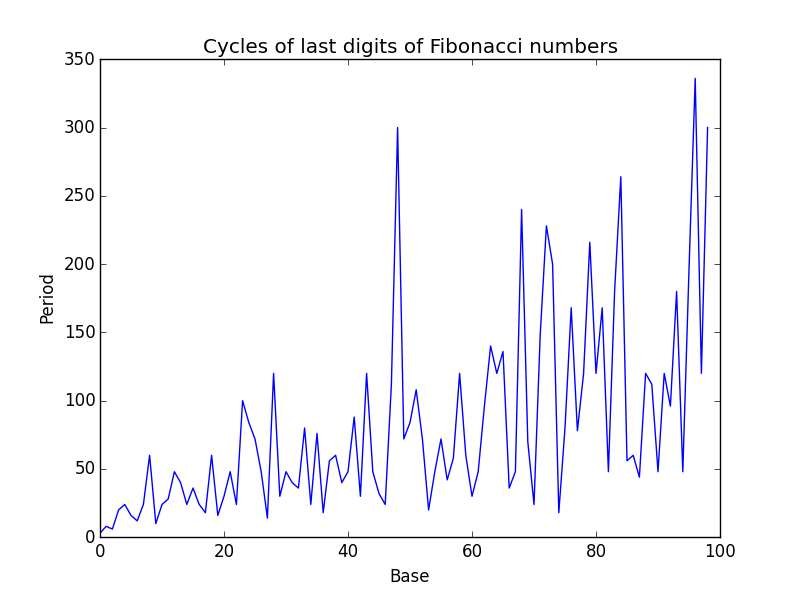The largest known prime at the moment is P = 257885161 − 1. This means that in binary, the number is a string of 57,885,161 ones.
You can convert binary numbers to other bases that are powers of two, say 2k, by starting at the right end and converting to the new base in blocks of size k. So in base 4, we’d start at the right end and convert pairs of bits to base 4. Until we get to the left end, all the pairs are 11, and so they all become 3’s in base four. So in base 4, P would be written as a 1 followed by 28,942,580 threes.
Similarly, we could write P in base 8 by starting at the right end and converting triples of bits to base 8. Since 57885161 = 3*19295053 + 2, we’ll have two bits left over when we get to the left end, so in base 8, P would be written as 3 followed by 19,295,053 sevens. And since 57885161 = 4*14471290 + 1, the hexadecimal (base 16) representation of P is a 1 followed by 14,471,290 F’s.
What about base 10, i.e. how many digits does P have? The number of digits in a positive integer n is ⌊log10n⌋ + 1 where ⌊x⌋ is the greatest integer less than x. For positive numbers, this just means chop off the decimals and keep the integer part.
We’ll make things slightly easier for a moment and find how many digits P+1 has.
log10(P+1) = log10(257885161) = 57885161 log10(2) = 17425169.76…
and so P+1 has 17425170 digits, and so does P. How do we know P and P+1 have the same number of digits? There are several ways you could argue this. One is that P+1 is not a power of 10, so the number of digits couldn’t change between P and P+1.
Update: How many digits does P have in other bases?
We can take the formula above and simply substitute b for 10: The base b representation of a positive integer n has ⌊logbn⌋ + 1 digits.
As above, we’d rather work with Q = P+1 than P. The numbers P and Q will have the same number of digits unless Q is a power of the base b. But since Q is a power of 2, this could only happen if b is also a power of two, say b = 2k, and k is a divisor of 57885161. But 57885161 is prime, so this could only happen if b = Q. If b > P, then P has one digit base b. So we can concentrate on the case b < Q, in which case P and Q have the same number of digits. The number of digits in Q is then 57885161 logb(2) + 1.
If b = 2k, we can generalize the discussion above about bases 4, 8, and 16. Let q and r be the quotient and remainder when 57885161 is divided by k. The first digit is r and the remaining q digits are b − 1.
Next post: Last digit of largest known prime
Update: There’s a new record prime as of January 2018, and it’s also a Mersenne prime. Update of this post here.
Related: Applied number theory

